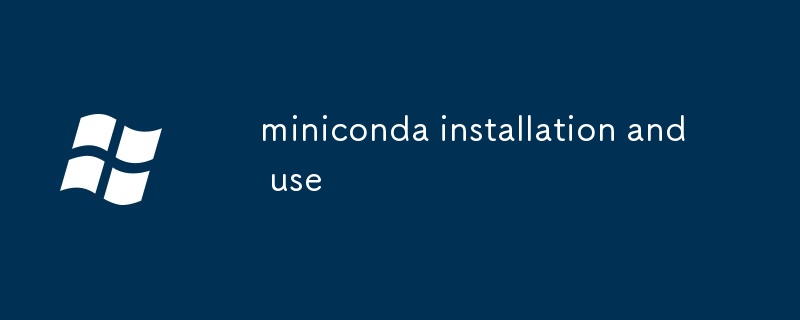This article provides detailed instructions on installing Miniconda on different operating systems, including Mac OS, Windows, and Linux. It also explains the differences between conda and pip, two commonly used package managers, and provides guideli

How to install Miniconda on different operating systems?
To install Miniconda on different operating systems, follow these steps:
-
Mac OS
- Download the Miniconda installer from the Miniconda website (https://docs.conda.io/en/latest/miniconda.html#miniconda-installer)
- Double-click on the installer file to launch the installation wizard
- Follow the on-screen instructions to install Miniconda.
-
Windows
- Download the Miniconda installer from the Miniconda website (https://docs.conda.io/en/latest/miniconda.html#miniconda-installer)
- Run the installer file and follow the on-screen instructions to install Miniconda. Select the "Just Me" option during the installation.
-
Linux
- Open a terminal and run the following commands:
<code class="sh">wget https://repo.continuum.io/miniconda/Miniconda3-latest-Linux-x86_64.sh
bash Miniconda3-latest-Linux-x86_64.sh</code>
Copy after login
What is the difference between conda and pip, and when should each be used?
- Conda is a package and environment manager used for installing and managing software packages and their dependencies. It can also create and manage virtual environments, allowing you to isolate different projects with their own sets of packages and dependencies. Conda is particularly useful when you need to install a specific version of a package or manage multiple versions of the same package.
- Pip is a package manager specifically designed for Python packages. It is used to install, upgrade, or remove Python packages from the Python Package Index (PyPI). Pip is typically used when you want to install or manage Python packages within a specific virtual environment or system-wide.
How can I create, activate, and manage different virtual environments using Miniconda?
To create a new virtual environment using Miniconda, use the following command:
<code class="sh">conda create -n myenv python=3.8</code>
Copy after login
This command will create a new virtual environment named "myenv" with Python version 3.8 installed. You can activate the virtual environment using the following command:
<code class="sh">conda activate myenv</code>
Copy after login
To deactivate the virtual environment and return to the base environment, use the following command:
<code class="sh">conda deactivate</code>
Copy after login
To manage virtual environments, you can use the following commands:
-
conda list: List all installed environmentsconda list: List all installed environments
-
conda remove: Remove an environment
conda updateconda remove: Remove an environment
🎜
conda update: Update an environment🎜🎜
The above is the detailed content of miniconda installation and use. For more information, please follow other related articles on the PHP Chinese website!






